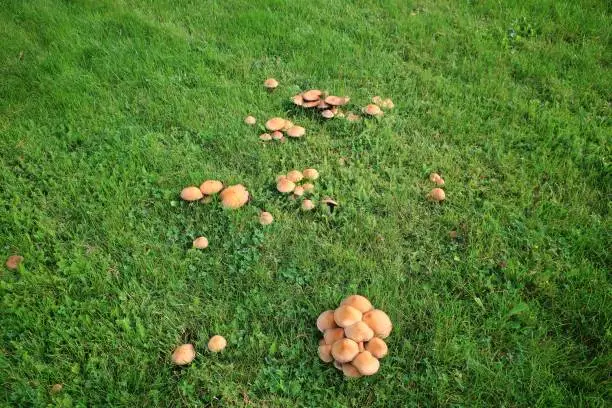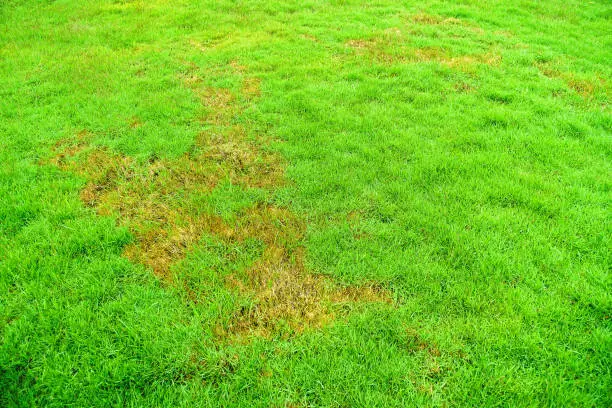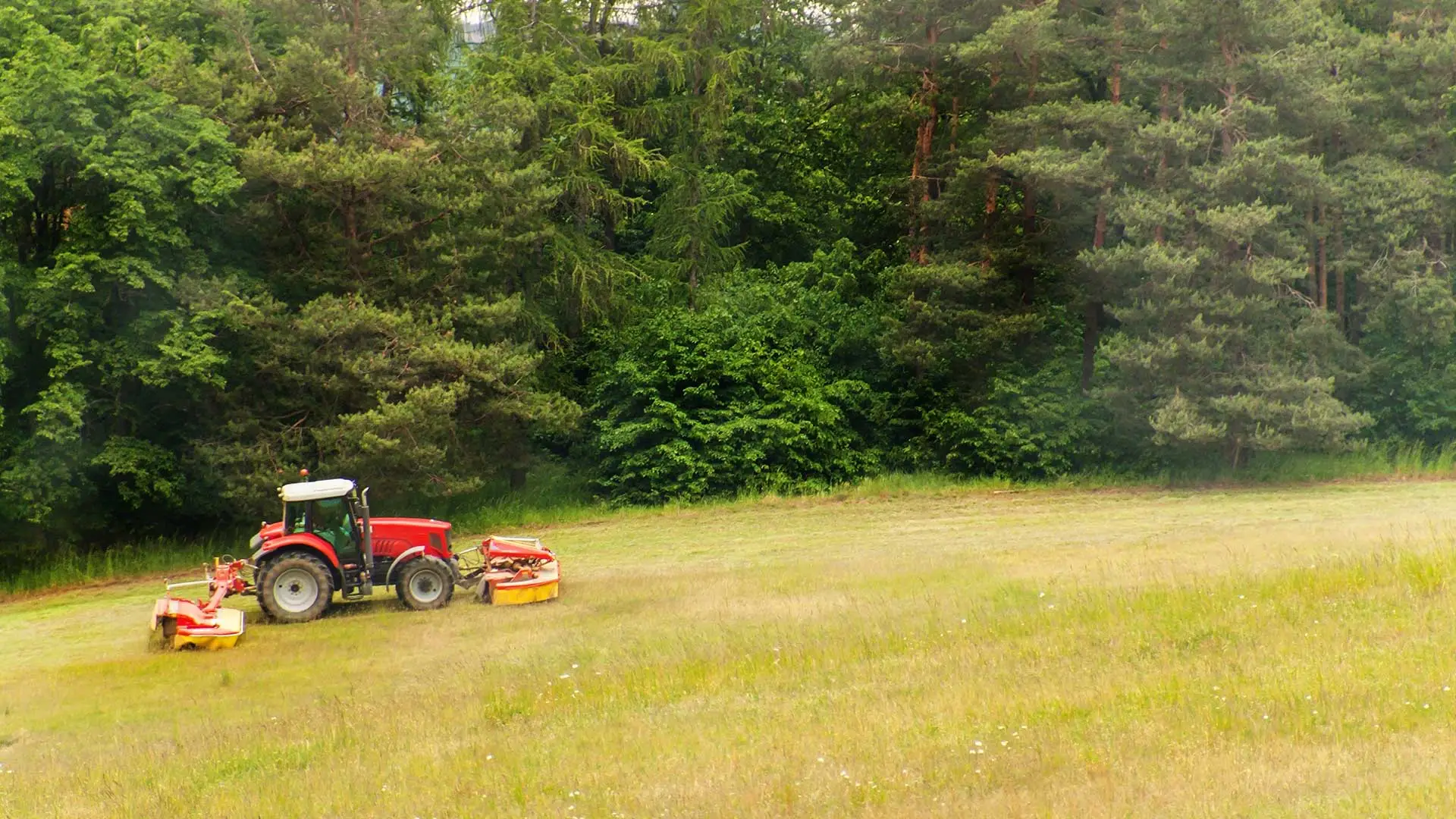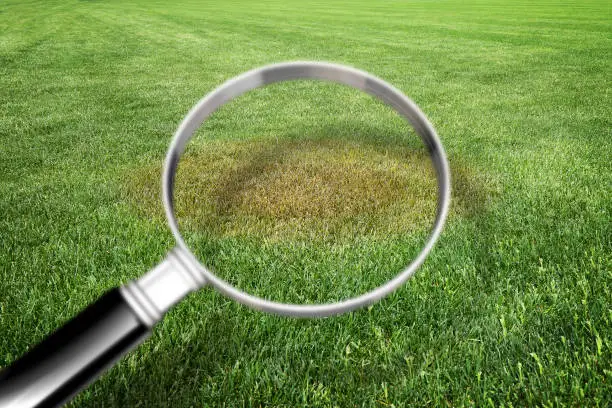When mother nature delivers a soggy spring or a summer heat wave, it stresses your lawn. Stressed or unhealthy lawns are much more likely to develop disease (aka. fungus); so the better you care for your lawn, the better the grass will be able to handle the natural conditions in your area.
Fungal diseases in your lawn can take on a variety of forms. From dead-looking brown patches to highly visible spots, threads, rings, or slimes, once fungus strikes your yard, it can be difficult to treat.
Fortunately, the right lawn care practices can go a long way toward prevention and treatment. One treatment method is fungicide. A fungicide can help eradicate the spores to keep it from spreading. Here's what you need to know about yard fungus and how to prevent it.
Defining Lawn Fungus

Most fungi in lawns are actually healthy for the grass. These healthy fungi decompose organic matter, which releases and then supplies turf nutrients that are good for growth. When properly maintained, fungi can be a part of the reason why your lawn is beautiful. However, dormant, disease-causing lawn fungi are harmful, silent enemies, looking for the moment your yard becomes stresses to attack.
Fungus is a disease resulting from changes in weather condition and temperature over an extended period of time. This can be from moisture (due to improper irrigation, slopes or uneven ground) or high heat. These conditions can make grass susceptible to diseases and reduce the grass’ ability to fight infections.
Common Causes:
- Drought
- Mowing too low
- Overwatering
- Using the wrong fertilizer
- Using too much fertilizer
- High humidity
- Compacted soil
Wet and humid weather conditions are what allows fungi to start creeping into your lawn.
How It Spreads
Fungi spreads by wind, rain, grass clippings, and lawn mowing. It can also be spread by walking through the infected area and then across your lawn (especially when it is wet). Which is why lawn care professionals will not mow a lawn that is infected with fungi without first treating it, as they could potentially spread it to other lawns.
Determining If Your Lawn Has Fungus

While there are a number of signs to watch out for, in most cases, discoloration is the most obvious sign. Your grass will turn yellow, tan, or brown in spots. Keep in mind, though that it’s not always a disease that can cause your lawn to look like this. Higher than normal temperatures, inadequate watering, and insects can also play a role in dead or dying areas.
Now, assuming that everything else is normal, brown patches (not attributable to pets), slimy patches, a film or spots on individual blades of grass are all considered signs of a fungus. While specific fungi do have unique signs, you can identified most by looking for:
- White, yellow, or brown patches or rings that grow in diameter.
- Thin patches of frayed, distorted, or discolored grass blades.
- Gray, black, red, orange, or purple spots on blades or stems.
- Gray, black, or pink powdery or threadlike coatings on and around grass blades.
- Areas of darkened, wet-looking, slimy, or greasy-looking grass.
Fungi grows differentially depending on the type of grass, so it's important to know what type of grass you have and the specific type of fungal disease before treating for it. This is why we recommend that you contact a lawn care professional. They know what to look for and how to best treat for the disease.
How To Prevent Fungus
Identifying the disease and understanding the cause behind it is essential for treatment and prevention. By identifying the type of fungus you have, you will determine the best treatment option. In most cases, the issue is weather and will clear up on its own once the weather changes. However, other problems need immediate mitigation as they can kill plants or cause permanent damage to your lawn.
Prevention Tips:
- Proper water
- Correct grass
- Mow correctly
- Apply fertilizer and fungicide
Not all lawn fungal diseases are treated the same. This is why you need to identify the cause of the problem, the problem itself, and then choose the correct treatment to save your lawn. Which is why it's usually better to consult a lawn care professional instead of treating your lawn by yourself.
Lawn fungus is a common problem and due to factors are out of your control. By taking the right steps for treatment and prevention, you'll keep your grass looking beautiful all season long.
Common Lawn Diseases & Insects Linnemann Lawn Care & Landscaping Treats
In addition to our fertilization and weed control services, we also treat common lawn diseases such as brown patch, rust, mushrooms, and more. We recommend a preventative fungicide application to make sure these diseases are presented with a hostile environment.
Our preventative insect control is included in our fertilization and weed control program and works to prevent insects such as white grubs, armyworms, sod webworms, and more. These pests can quickly destroy a lawn as they eat the roots and kill off the grass blades.
Contact us at (618) 939-4769 to treat and prevent these common diseases (and insects) today!





Comments (0)
Thanks for your comment!
Thanks for your feedback! Your comments have been successfully submitted! Please note, all comments require admin approval prior to display.
Error submitting comment!
There is a problem with your comment, please see below and try again.